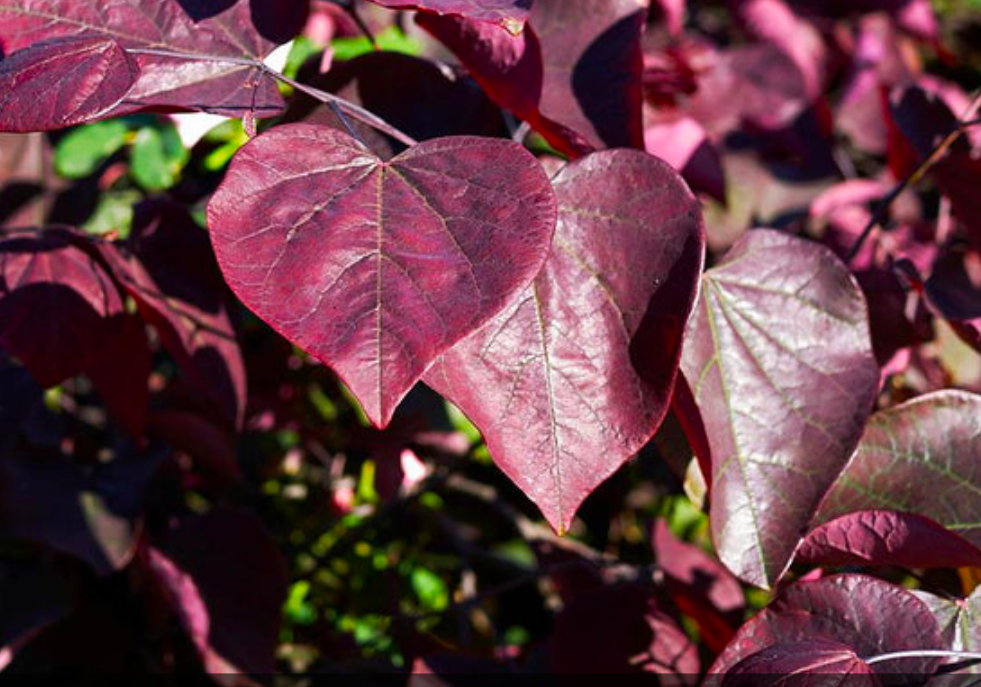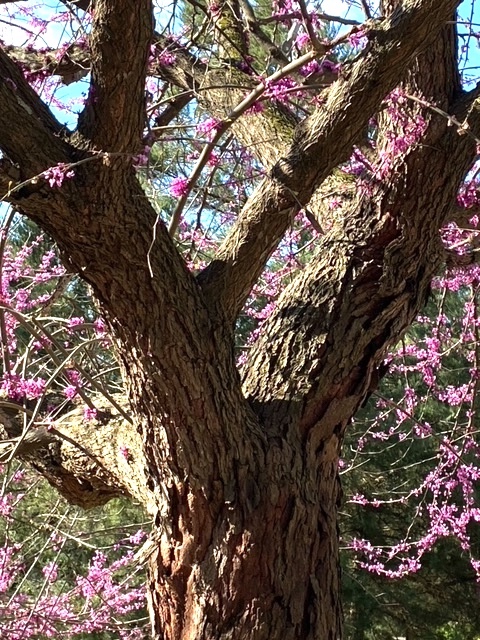
One of the most beautiful trees in bloom in early spring is the incomparable Eastern Redbud. With its magenta flowers lining the branches, it stands out like a beacon in the forest. Most other trees still without leaves or flowers, look naked in comparison.

Though Eastern Redbud, Cercis canadensis is a native tree, horticulturists have “borrowed” it to bring into the landscape. The species is gorgeous but the cultivars, which display even brighter blossoms or more intensely colored leaves may even be more beautiful.

Redbuds display a unique flowering characteristic. The small flowers grow directly on the trunk and large branches, a trait called cauliflory. This trait is displayed by over one hundred trees, mostly from rain forest ecosystems. Both flowers and fruit develop directly on the sturdy parts of the tree, providing pollinators a stable platform from which to do their job. Redbud is pollinated by blueberry and carpenter bees. It provides food for nineteen species of caterpillars, leafhoppers and beetles.

Not only are the blossoms beautiful to look at, they are also tasty to eat. Try them raw in salads or roasted for an unusual taste treat. Just be certain that they tree has not been sprayed with chemicals of any kind. The flat seed pods, which appear in August and September persist throughout the year. Folk healers used the bark to treat diarrhea and as a remedy for leukemia. The new green twigs were used by Native Americans to season wild game and in Appalachia the tree was referred to as “Spicewood Tree.”

Legend says that Judas Iscariot hanged himself from the redbud tree after he betrayed Jesus and for this reason, the tree is sometimes called Judas tree. But in other parts of the world, more cheerful names are used, including “love tree.”
No matter what you call it, this native tree brings a bright spot of color to the woods in early spring and should be welcomed in all our landscapes.

How interesting! Up here near Chattanooga the recent freeze knocked out a lot of buds on this and new growth on a lot of my other favorites. I am going out scouting for lunch!